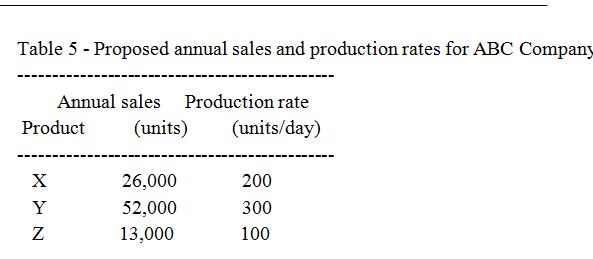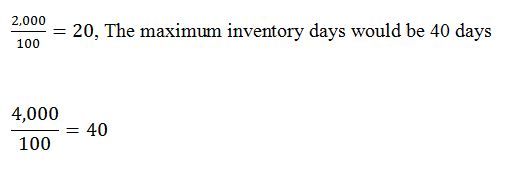Inventory control is the management of inventory and relies heavily on information provided by the inventory record keeping system. Inventory is required to support the operations of the business, whether it be a retailing or manufacturing business. The proper management of inventory helps the business achieve its objectives in sales, costs and profits. The business plan must recognize and define the role inventories will play in achieving the business objectives. Inventory control consists of the following:
- Setting objectives for inventory: the type, quantity, cost and order/production point (what quantity will initiate action for resupply) of products/materials.
- Recording and reporting actual results (done by the inventory keeping system).
- Comparing actual results with objectives and analyzing the differences.
- Taking action to correct problems or improve business performance.
Inventory supports the sales activity. This means having what the customer is willing to buy, when he or she needs it, at a price that provides an acceptable profit to the business.
Inventory control is integrated with systems that track sales, production and purchasing activities. The following is a simple example. The ABC Company plans to produce and sell three products: X, Y and Z as detailed in Table 5.
The business operates five days per week, 52 weeks per year. The minimum economic production run is two weeks. It is planned to have a minimum inventory equivalent to four weeks of the planned sales rate to ensure having enough product for customer needs.The maximum inventory is to be eight weeks of the planned sales rate to limit the investment. The minimum and maximum inventories, based on these plan assumptions, would be as listed in Table 6.
When product X inventory falls to 2,000 units, a production order is issued to bring the inventory level to 4,000 units. If sales continue at 100 units per day and the production rate is 200 units per day, it will take four weeks of production time to raise the product X inventory to 4,000 units. Various measures are used, for control purposes, to relate inventory amount to sales activity. Two commonly used measures are inventory days (used in manufacturing businesses) and inventory turnover (used in retailing businesses).
Inventory Days
Inventory days measure the amount of inventory in terms of days of sales. In the example for BAC Company, where product X sales rate was 100 units per day, the inventory days for the minimum inventory planned of 2,000 units would be 20 days (inventory amount divided by daily sales rate, or
Values (costs) can be used in calculating inventory days. Assume that the units cost KES5.00 each in the above example. For product X, the minimum inventory planned would be KES10,000 (2,000 units xKES5.00 per unit) and the daily cost of sales would be KES500/day (100 units/day x KES5.00 per unit). Inventory days for the minimum inventory planned would be 20 days (inventory value/cost of sales per day or
Inventory Turnover
Inventory turnover measures the number of times in a year that the inventory “turns over.” In the above example, if product sales are planned at a rate of 100 units per day or 26,000 units for the year and the inventory averages 3,000 units, the inventory turnover would be 8.67 Again, values (costs) could be used in calculating inventory turnover similar to that done above. Although the time period of a year is used as the basis for calculating inventory turnover in most cases, a seasonal business (such as a store in a summer resort) would use the season as the basis. In this case, the business objective is to turn the inventory over as many times as possible and have little or no inventory by the end of the season. Actual sales activity (sales rate, product preferences, selling prices) must be closely monitored with inventory (products, quantities, costs, re-supply limits) to be sure that the inventory control system is properly supporting the sales activity. Another important objective of inventory control is to keep the financial investment in inventories just sufficient to support the business. Inventory building converts cash into products that may or may not sell or may sell at a price less than cost. Inventories consume cash, increase the investment in the business and can bankrupt the business if not properly controlled.
Inventory Strategies
Every business competes within an industry and each industry has a life cycle. The strategies employed by the business depend on where in the life cycle the industry is. The management of inventories is influenced by this life cycle. Generally, there are four stages in the life cycle of an industry. These are as follows:
- Development – Uniquely new products are being developed and market tested. Products must be available for market testing. There is little concern about inventory investment, other than to be sure products are available for market testing and development.
- Growth – The product has been demonstrated to have significant market potential and the business strives to gain a major market share. Investment in inventory is heavy to ensure product availability to gain significant market share.
- Maturity – Growth has leveled off. Inventories are very closely controlled to keep investment in them just sufficient to maintain market share.
- Aging – A period of retrenchment as competitive industries take away or eliminate markets. Inventories decline as unprofitable and marginally profitable segments of the business are weeded out.
The proper control of inventories is essential to the success of any business in which investment in inventories is significant.
Awareness of the competition and the state of new product development is just as important as a finely honed record-keeping system. While the record-keeping system is important, how it is applied will determine the success of the business.




